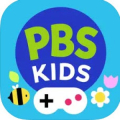Bad Parenting
When I first downloaded Bad Parenting 1: Mr. Red Face, I felt intrigued by a title that promised a blend of humorous irreverence and thought-provoking gameplay. I was drawn in not only by curiosity but by the idea of experiencing a narrative from the perspective of a character grappling with unusual parenting challenges. The game’s design, which daringly transforms the everyday trials of nurturing into a chaotic adventure full of unexpected twists, immediately resonated with me. I embraced the role with a mixture of amusement and cautious anticipation, ready to navigate a quirky digital landscape where every decision mattered.
Interactive Gameplay and Dynamic Mechanics
The gameplay in Bad Parenting 1 is anything but conventional. I quickly discovered that the game challenges me to balance responsibilities with offbeat tasks that keep me on my toes. Every interaction in the game requires careful thought, and I found that the mechanics, though playful, demand a strategic hand. I was in charge of making decisions that affected not only the character’s life but also the unpredictable environment around them. From buffeting chaotic routines to managing quirky mini-quests, the gameplay creates an energetic interplay between seriousness and slapstick humor. The constant push and pull of responsibility versus mischief keeps each moment both engaging and refreshing.
Rich Narrative and Character Development
The narrative of Bad Parenting 1 unfolded gradually, revealing a surprisingly layered story beneath its humorous exterior. I found myself empathizing with Mr. Red Face as his journey through misadventures and moments of self-reflection became increasingly compelling. The dialogue is witty and engaging, often reflecting on real-life challenges while delivering unexpected laughter. At the heart of this narrative is a character who is both flawed and endearing, and throughout my gameplay, I felt a genuine connection to his struggles as a parent balancing duty with the absurdity of life. The character development serves as both entertainment and commentary on the chaotic nature of modern parenting.
Visual Aesthetics and Artistic Flair
The aesthetics of Bad Parenting 1 are a defining aspect that immediately grabbed my attention. The game boasts a unique art style that cleverly fuses cartoonish whimsy with gritty realism. Each setting, from cluttered living rooms to bizarre outdoor scenarios, is imbued with a distinct visual personality that mirrors the protagonist’s internal chaos. I appreciated the vibrant use of color and detailed character expressions, elements that transform every scene into a piece of narrative art. The juxtaposition between the comical character design and the sometimes somber background storytelling creates a visual narrative that is both enchanting and unsettling.
Audio Design and Musical Scores
As I delved deeper into the game, I began to notice how the audio design reinforces the overall experience. The game’s soundtrack is playful yet haunting, mirroring the emotional fluctuations present throughout the different phases of the game. I found that each scene is accompanied by musical cues that enhance the tension or provide relief with a sense of lighthearted irony. The sound effects are meticulously crafted, ensuring that every action—from frantic moments of chaos to subtle background details—feels impactful. This clever use of audio not only heightens the immersion but also anchors the narrative, allowing me to experience the highs and lows of Mr. Red Face’s daily struggles in a profoundly sensory way.
Humor and Unconventional Storytelling
The humor in Bad Parenting 1 is as unpredictable as it is engaging. I was consistently amused by the game’s ability to blend sharp wit with absurd situations. The narrative is peppered with ironic scenarios and humorous juxtapositions that reflect the oddities of life. The game challenges the typical tropes of parenting narratives, instead offering a refreshingly unconventional take on life’s everyday dilemmas. I found that the humor not only lightens the overall tone but also serves as an ingenious commentary on societal expectations and the often messy reality of family dynamics. Every quirky twist and tongue-in-cheek remark invited me to laugh at the absurdity of it all, even as the stakes grew unexpectedly high.
Intuitive Interface and User Experience
Navigating through Bad Parenting 1 felt like discovering the inner workings of a well-oiled machine hidden beneath layers of visual and narrative complexity. The user interface is designed with clarity in mind, ensuring that no matter how unpredictable the gameplay becomes, I always felt in control. I appreciated the simplicity and responsiveness of the on-screen elements, which allowed me to fluidly transition from managing daily challenges to engaging with off-beat mini-tasks. The seamless integration of gameplay and storytelling elements made for an uninterrupted experience, permitting me to focus entirely on the unfolding narrative while confidently executing each command. This balance of intuitive controls and rich content truly enhanced my engagement with each play session.
Exploration and Decision-Making
One of the core strengths of Bad Parenting 1 is its emphasis on exploration and decision-making. From the moment I started playing, I was presented with choices that not only influenced my immediate surroundings but also echoed through the game’s overall storyline. I enjoyed exploring multiple outcomes depending on the decisions I made, allowing for a sense of agency and personalization rarely seen in similar titles. Each decision felt weighty, imbuing every aspect of gameplay with unforeseen consequences and a refreshing unpredictability. This interactive narrative approach made me feel as if I were actively shaping the story of Mr. Red Face, with each choice driving the evolution of his character and the world around him.
Challenge and Skill Development
Bad Parenting 1 also presents a fair share of challenges that compel players to refine both their strategic thinking and quick decision-making skills. While the game is laced with humor, it does not shy away from presenting complex obstacles that require careful handling. I found satisfaction in the balance between chaotic scenarios and the deliberate pauses that allowed for thoughtful strategy. In many instances, the game tested my patience and creativity simultaneously. Over time, these challenges pushed me to develop a deeper appreciation for the craft behind the game, as it continuously introduced new layers of difficulty without ever relying solely on repetition. Mastering these challenges became a deeply rewarding aspect of my journey as I progressed through the game’s intricacies.
Innovative Mechanics and Replay Value
What sets Bad Parenting 1 apart from other games in its genre is its innovative use of mechanics that keep the experience feeling fresh with each playthrough. The mix of simulation elements with unexpected narrative turns provided me with a multifaceted gameplay experience where routine interactions could suddenly evolve into moments of remarkable intensity. I found myself replaying segments not merely to experience a different outcome, but to challenge myself further and delve deeper into the subtleties of the game’s design. This level of replay value is a testament to the game’s creative vision, inviting players to continuously engage and experiment with their decision-making process. It transformed each return visit to the game into an opportunity to explore hidden depths and emergent gameplay patterns that were both surprising and satisfying.
Underlying Themes and Emotional Resonance
While Bad Parenting 1 constantly engages players with its humor and dynamic challenges, beneath the playful veneer lies an exploration of serious themes related to responsibility, self-awareness, and the unpredictable nature of life. I found that the game confronts difficult topics while never losing its sense of levity. The characters’ interactions and the narrative structure subtly hint at the underlying struggles that many face in the real world, yet these moments are interwoven with absurdity in a manner that is both poignant and laugh-provoking. As I navigated the various challenges, I experienced moments of unexpected introspection that added a layer of emotional complexity to the overall gameplay experience. This convergence of humor and heavy themes created an engaging emotional balance that both entertained and encouraged reflective thought.
Environmental Design and World-Building
The world of Bad Parenting 1 is richly textured, with environmental design that often feels like another character in the narrative. I was captivated by the attention to detail in every setting, from the domestic spaces that exude a nostalgic charm to the surreal landscapes that challenge conventional perceptions. The game’s world-building is both imaginative and deeply immersive, inviting players like me to explore spaces that are filled with quirky visual cues and unexpected narrative hints. I particularly admired how the environmental elements reflected the inner turmoil and idiosyncrasies of Mr. Red Face, lending a deeply personal touch to the game’s visual storytelling. This meticulous design not only enhances the aesthetic appeal but also deepens my overall immersion in the digital narrative.
Humor in Dialogue and Character Interactions
Throughout my time with Bad Parenting 1, the dialogue struck me as refreshingly original. The conversational exchanges are intricately crafted with pithy remarks that both amuse and reveal something deeper about the character’s mindset. I particularly enjoyed the interplay between Mr. Red Face and the supporting cast, whose interactions provided moments of comedic relief as well as careful observation of everyday absurdity. The dialogue often comes across as a subtle nod to the complexities of familial relationships, where moments of levity disguise underlying tensions and vulnerabilities. Engaging with these interactions allowed me to appreciate the layers of satire and playful honesty embedded in every exchange. The humor within the dialogue added considerable charm to the overall narrative, ensuring that the experience was as intellectually stimulating as it was entertaining.
Technical Performance and Smooth Functionality
One aspect that pleasantly surprised me was the game’s technical performance. Despite its intricate design and the hefty layers of narrative and interactive elements, Bad Parenting 1 runs smoothly and efficiently on my machine. I encountered very little lag or glitches, which allowed me to remain completely immersed in the gameplay and narrative flow. The developers seem to have taken care in optimizing the game for a variety of systems, and this level of technical robustness significantly enhances the overall experience. I appreciated that technical issues never detracted from the journey, allowing me to focus primarily on the unfolding story and complex gameplay without interruption. Each meticulously rendered frame and fluid interface element served as a testament to the care and attention invested in the game’s development.
Personal Reflections During the Journey
As I progressed through the layers of chaotic parenting and whimsical trials, I found that Bad Parenting 1 prompted me to reflect on my own perspectives about responsibility and personal growth. The game’s narrative and its unconventional approach to familiar themes resonated with me on a personal level. I realized that beneath the humorous surface, there was an earnest exploration of the trials and rewards inherent in caring for others—even when circumstances seem overwhelmingly comical. During moments of particularly intense gameplay, I paused to appreciate the clever commentary on everyday challenges, which felt remarkably relatable despite the exaggerated scenarios. Engaging in these introspective intervals provided a balanced counterpoint to the overall levity of the experience, making it a uniquely reflective journey that hovered gracefully between satire and genuine sentiment.
Creative Design and Unexpected Surprises
Perhaps one of the most enjoyable facets of my experience was the game’s penchant for throwing creative curveballs when least expected. I encountered numerous unexpected events that, though seeming random at first, gradually revealed themselves as intricate components of the broader narrative framework. These surprises fostered an ongoing sense of wonder and anticipation, prompting me to re-examine elements of the gameplay that I might have otherwise taken for granted. Whether it was an unconventional twist in a familiar scenario or an improvisational challenge that required me to think on my feet, each surprise reinforced the game’s reputation for originality. I found that these ingenious moments of creativity not only kept me engaged but also fostered an appreciation for the depth and unpredictability woven into every aspect of the gameplay experience.
- Engaging and dynamic gameplay that offers continuous surprises and challenges
- Rich, layered narrative that evolves with each decision I make
- Unique visual design blending whimsical and realistic elements seamlessly
- Clever and humorous dialogue that adds depth to character interactions
- Intuitive interface and smooth controls that facilitate uninterrupted play
- High replay value with multiple branching outcomes that keep the experience fresh
- Some segments of the storyline can feel repetitive over extended play sessions
- The complexity of decision-making may overwhelm players who prefer straightforward gameplay
- Occasional technical glitches and performance hiccups can disrupt the immersive experience
















